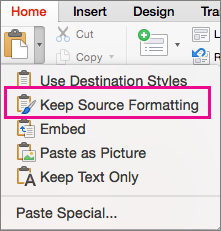

- #INCREASE THUMBNAIL SIZE WORD 2016 FOR MAC HOW TO#
- #INCREASE THUMBNAIL SIZE WORD 2016 FOR MAC PDF#
- #INCREASE THUMBNAIL SIZE WORD 2016 FOR MAC FULL#
- #INCREASE THUMBNAIL SIZE WORD 2016 FOR MAC PRO#
- #INCREASE THUMBNAIL SIZE WORD 2016 FOR MAC SOFTWARE#
The following steps show how to customize the built-in heading styles in an individual Word document. How to Customize Word’s Built-In Heading Styles The heading formatting will automatically turn off.ĥ. Press Enter on your keyboard to move your cursor to the next line. The selected text will be formatted with the new heading style immediately. For example, Heading 4 will appear after you use Heading 3. Additional heading levels will appear after you use higher-level headings.
#INCREASE THUMBNAIL SIZE WORD 2016 FOR MAC PRO#
Pro Tip: Word includes nine heading levels, although only a few will appear in your Styles group when you open a new document. (If you didn’t select existing text during step 2, type your new heading text after making your selection.) Figure 3. Select the appropriate heading level in the Styles group. Text selected to be formatted with a heading styleģ. (Or, move your cursor to a blank line where you want to type your new heading during the next step.) Figure 2. Select the text you want to turn into a heading. The next section explains how to customize the built-in heading styles.ġ. The following steps show how to create headings using Word’s built-in styles. How to Create Headings Using Word’s Built-In Heading Styles If you only use a large font size for headings, people with vision impairment who use screen readers will have less information about how your document is organized.*
#INCREASE THUMBNAIL SIZE WORD 2016 FOR MAC SOFTWARE#
Most importantly, screen reading software can identify your heading hierarchy based on Word’s styles.
#INCREASE THUMBNAIL SIZE WORD 2016 FOR MAC PDF#
#INCREASE THUMBNAIL SIZE WORD 2016 FOR MAC FULL#
This to show all the responses and the full discussion.)įor sample templates that have two of the discussed (The forum just displays the one response marked as an answer. Link to a lengthy discussion of this change with workarounds: The boundaries revert to the previous display. If the document in Word 2013 is opened in compatibility mode The old functionality – it truly doesn’t exist." Unfortunately, this means that scenarios that used to workĪccidentally now don’t work the same way. So Word "isĭoing precisely what it has always done (drawing borders around internal data That should probably never have been exposed to users.ĭraws a border around internal drawing rectangles," and those have nowĬhanged with the switch to a hardware-accelerated display.

That was never supposed to be a feature," "a window into the internals of word" This is that text boundaries are " a feature There is no way to change thisĭisplay in Word 2013-2019/365 and it is highly unlikely that it will be changed back.Īs reported by Suzanne Barnhill and others, Microsoft's take on Paragraph boundary rather than a page boundary. This changed the display of these dotted lines to a These dotted lines were even being used for this purpose and changed their text However, the designers at Microsoft were apparently unaware that Personally, I found them distracting and simply Shauna Kelly recommended turning them on in herīeginner's tutorial. Many Word users use this feature to tell them, at a glance, Here are two screenshots of the same document Margins, but this is not quite as intuitive for many users. Note that the Horizontal and Vertical Rulers also display the Margins as "text boundaries." Here is a screenshot from Word 97 with themĭisplayed and with the option dialog that turns display on or off: Microsoft Word has long had the option of displaying the page (changed with Word 2013) This page last revised: Text Boundaries Display in Microsoft Word List and other info and go directly to the start of this topic. Please consider making a donation if you can. It costs money to keep on line and effort to


 0 kommentar(er)
0 kommentar(er)
